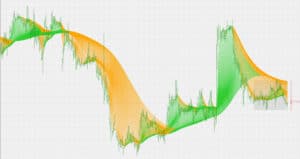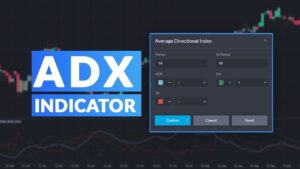Bollinger Bands are a type of statistical chart characterizing the prices and volatility over time of a financial instrument or commodity. You might wonder, “What is a trader’s toolbox?”
Simple!
Let’s compare trading to the construction of a home.
On a screw, you wouldn’t use a hammer, right? You wouldn’t use a buzz saw to drive nails in either.
Each scenario requires a specific instrument.
Certain technical indicators, just like in trading, are better used in specific environments or scenarios.
As a result, the more tools you have, the more you’ll be able to ADAPT to the always-altering market environment.
It’s also fine if you want to concentrate on a few specialized trading settings or tools.
When it comes to putting electricity or plumbing in a home, having a specialist is beneficial, just as having a Bollinger Bands or Moving Average specialist is beneficial.
There are a million different methods to get your hands on some pips.
Consider each of these indications as a new tool to add to your arsenal as you learn about them in this session.
Although you may not use all of these tools, it’s always nice to have a variety of options, right?
You might even discover one that you are familiar with and confident enough to handle on your own. Enough with the tools already!
Let’s get this party started!
Bollinger Bands
Bollinger Bands, a technical indicator developed by John Bollinger, are used to measure a market’s volatility and identify “overbought” or “oversold” conditions.
Basically, this handy gadget tells us if the market is quiet or if it’s LOUD!
The bands constrict when the market is quiet and expand when the market is LOUD.
Take a look at the graph below. The Bollinger Bands (BB) are a chart overlay indicator, which means they appear above the price.
Notice how the bands are close together when the price is quiet. The bands stretch apart as the price rises.
The upper and lower bands represent volatility or the degree to which prices change over time.
Bollinger Bands automatically respond to changing market conditions because they gauge volatility.
It’s as simple as that. Yes, we could go on and on about the history of the Bollinger Bands, how they are derived, the mathematical principles that underpin them, and so on, but we didn’t feel like penning it all out.
Okay, fine, we’ll give you a quick rundown.
What are Bollinger Bands?
Bollinger Bands are usually shown as three parallel lines:
- a band on the top
- A line in the centre
- A lower-level band
The indicator’s mainline is a simple moving average (SMA).
Most charting applications default to a 20-period moving average, which is adequate for most traders, but once you’ve mastered Bollinger Bands, you may experiment with alternative moving average lengths.
By default, the higher and lower bands represent two standard deviations above and below the middle line, respectively (moving average).
If you’re worried about standard deviations because you’re not familiar with them.
Do not be alarmed. The concept of standard deviation (SD) is simply a measurement of how widely numbers are distributed.
If the upper and lower bands are 1 standard deviation apart, approximately 68 percent of current price movements are CONTAINED inside these limits.
If the upper and lower bands are 2 standard deviations apart, this suggests that around 95% of recent price movements are CONTAINED inside these limits.
Since you’re probably dozing off, I’ll use an image to wake you up.
As can be seen, the higher the SD value you select for the bands, the more prices they “catch.”
Once you’ve gotten a better understanding of how the bands work, you can experiment with different standard deviations. To be honest, you don’t need to know most of this to get started.
We believe it is more vital to demonstrate how you can use the Bollinger Bands in your trade.
The Bollinger Bounce
Bollinger Bands have a tendency to return to the middle of the bands, which you should be aware of.
The “Bollinger Bounce” is based on this concept.
Can you predict where the price will go next based on the graphic below?
If you answered, you are correct. As you can see, the price has now returned to the center of the bands.
The Bollinger Bounce you just witnessed was a textbook Bollinger Bounce. The Bollinger bands operate as dynamic support and resistance levels, which causes these bounces.
The longer the time frame, the more powerful these bands become.
Many traders have devised strategies that profit from these bounces and this strategy works best when the market is ranging and no apparent trend is present.
You should only use this strategy when prices are not trending. As a result, pay attention to the WIDTH of the bands.
When the Bollinger Bands widen, avoid trading the Bollinger Bounce because this usually suggests the price isn’t moving within a range but rather in a trend.
Instead, look for these conditions when the bands are stable or even contracting.
Now let’s look at a way to use Bollinger Bands when the market is TRENDING…
Bollinger Squeeze
The so-called “Bollinger Squeeze” is self-explanatory. When the bands squeeze together, it usually indicates that a break is on the way.
If the candles begin to break out above the TOP band, the trend is likely to continue upward.
If the candles begin to break out below the BOTTOM band, the price is likely to continue to fall.
The bands can be seen squeezing together in the chart above. The price has only recently begun to break through the top band. What do you think the price will be based on this information?
You are correct once more if you said it up!
This is how a Bollinger Squeeze works in practice.
The goal of this technique is for you to catch a movie as soon as feasible.
These kinds of setups don’t happen every day, but if you look at a 15-minute chart, you can definitely find them a few times a week.
There are a lot of other things you can do with Bollinger Bands, but these are the two most frequent tactics.
Add the indicator to your charts and observe how prices change in relation to the three bands. Change some of the indicator’s parameters once you’ve gotten the hang of it.
Before we move on to the next indicator, it’s time to add this to your trader’s toolbox.
Looking for a highly rated forex fund manager?
Fx Pips Guru has a strong group of forex experts who are managing forex accounts of our clients from different brokers dedicatedly. Just hire our forex fund managers here: https://www.fxpipsguru.com/forex-fund-manager/.




